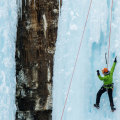Sports have been an integral part of Canadian culture since the 19th century. From hockey to basketball, soccer to curling, Canadians have embraced a wide variety of sports and activities. Hockey, our national winter sport, was invented in Canada in the 19th century, and basketball was invented by Dr. James Naismith in 1891 to train young athletes during the winter.
Today, soccer is the most popular sport among Canadian children. Canadian sport is indebted to indigenous culture for tobogganing, snowshoeing, lacrosse sticks and canoeing. The coureurs des bois and the voyageurs, thanks to their close contact with indigenous peoples, helped to introduce into European settlements the activities that resulted from the use of these equipment. Many indigenous games had utilitarian purposes related to survival (for example, blanket-throwing, tug-of-war, dog sled races, drum dances, spear throwing and ball games). The First Nations also developed a wide variety of games, such as the punch, the ring and the pole games, the snow snake, the cat's crib, the dice and the cards with birch bark, partly out of a pure taste for the game and sometimes for the purpose of betting.
Inuit games were similarly related to the preparation of young people for cooperative existence in a hostile environment in which the limits of tolerance also had to be known. The relatively slow pace and strategic emphasis of curling have made it a popular sport among Canadians of all ages, and many amateur curling leagues still have players between 50 and 60 years of age or older. Professional curling has existed since the founding of several men's curling clubs in the late Victorian era, and curling tournaments are now organized nationwide through Curling Canada (formerly known as the Canadian Curling Association).While hockey and soccer are still the country's most popular sports and clichés, practically every major organized sport has its share of Canadian supporters. The country is home to a wide variety of teams, leagues and professional players waiting to be applauded or booed. Not to mention the cohesive power of sport and the pride that communities feel when local heroes stand out on the national and international stage. Canadians were at the forefront of the development and popularization of lacrosse, baseball, soccer, hockey and basketball.
In 1992 and again in 1993, Toronto became the first (and to date, the only) Canadian team to win the MLB World Series tournament. However, several Canadian cities had teams in the Triple-A International League including Toronto, Montreal, Hamilton, Ottawa and Winnipeg. Another sport with an ancient tradition but little popular appeal is curling. It was first brought to Canada by Scottish immigrants in the late 18th century and today it thrives mainly on the Canadian prairies. Urbanization and industrialization which had helped to sow the seeds of modern sports in the 19th century continued in the 20th century with an even greater impact. William George Beers a dentist from Montreal was the driving force behind the development of modern lacrosse and the creation of the National Lacrosse Association on September 26 1867 at a convention in Kingston Ontario this was the first of many sports organizations of this type that were established in Canada. With the formation of the Montreal Expos in 1969 and Toronto Blue Jays in 1977 two Canadian cities had franchises in major professional baseball leagues based in United States.
In addition Canadians had found success and pride challenging athletes from other parts world. In addition being game Real Sports will provide you most exciting playoff experience. James Carson is only physical education specialist left his school dying breed system which sport no longer fundamental part curriculum. As these teams rack up victories become better known their cities Canadian interest soccer likely increase. Horse racing provided social sporting environment townspeople scene greatest social mix 19th century society.







